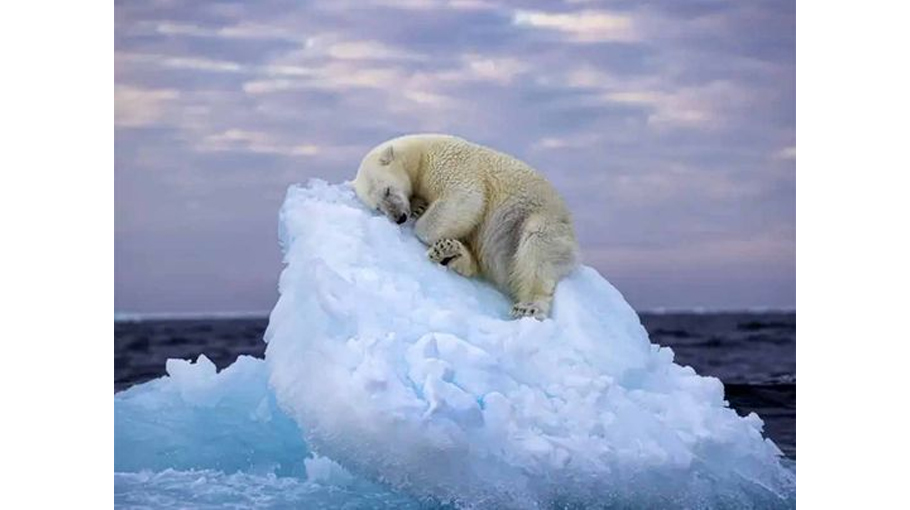What the animal kingdom can teach humans

A lone polar bear on an iceberg. This year’s Wildlife Photographer of the Year People’s Choice Award winner is, in many ways, a photo we’ve seen before. It’s a peaceful scene, with the slumbering bear reminiscent of a contented house cat. Yet it’s a reminder that all life depends on ecosystems that are growing increasingly fragile as the planet heats with our greenhouse-gas emissions.
A new study underscores the same message of fragility through images of polar bears in a landscape we rarely envisage — terrain completely devoid of snow or ice. Researchers tracked 20 bears in Manitoba, Canada, equipping them with video collars to monitor activity levels and food intake. There’s a lesson for us all in the surprising and sobering results.
While on shore, bears were thought to fast, conserving precious energy until the sea ice returned. However, the study showed differences in survival strategies between individuals. Some didn’t seek sustenance. The laziest bear rested for 98% of the time — making lead author Anthony Pagano’s job of watching 115 hours of video footage a slog at points. But others were surprisingly active, moving across the landscape and consuming a range of terrestrial foods including bird carcasses, duck eggs, berries and seaweed.
But it didn’t really matter what strategies the bears employed. Apart from one lucky nanuk who was able to feed on a large mammal, all of them lost body mass. While land-based fodder compensated for the energy expended seeking it out, berries and birds don’t sustain a polar bear. They’re simply too big, explains Pagano, who is a research wildlife biologist at the United States Geological Survey, a US government agency. The implication is that if the ice-free period extends for long enough, the bear population in the area would starve.
There are lessons from the
natural world in how to
adapt to the climate crisis
The animals were more active than expected, which raises a few extra risks. The first is knock-on effects for seabird colonies and other land-based creatures, who may end up getting preyed upon more than they’re used to. The other big consequence is that, in their search for food, hungry bears may wind up in human settlements, including communities not accustomed to having apex predators in their backyards. That makes the development of management techniques to keep both bears and humans safe crucial.
Contrary to the researchers’ expectations, there was no correlation between energy expenditure and body condition. In other words, the driver behind the different tactics is individual-level variation: some bears may simply be lazier than others.
There’s no knowing why bears swam so far, but it put them at a disadvantage: They each had the earliest predicted time of starvation for their respective age and gender.
There’s a tendency to believe animals have an unimpeachable survival instinct — that a species will behave, as a group, in the same, optimal way. But just as humans aren’t always the rational actors some economists model us to be, neither are animals. This doesn’t make them stupid, but speaks instead to their intelligence: Each bear is trying to creatively solve the puzzle of how to stay alive in a challenging scenario.
Some behaviour, such as the long swims, could be categorised as maladaptation, which humans also fall prey to. In trying to adapt to the climate crisis, projects can actually make us more vulnerable or simply waste resources. For example, we keep building higher flood barriers, only to see the water redirected to an area without protections or have them breached as climate change intensifies storms. In some cases, efforts to make farming resilient to drought actually made the farms less water-secure.
We don’t know if those bears learnt that swimming brings little reward. But, as humans, we have a unique advantage to avoid the same maladaptive mistakes: We can review our actions as well as the decisions of others, collecting data and modelling impacts to optimise our collective blueprint for survival in a changing world. We can also read studies about polar bears — and vow both to learn from their behaviour and protect them. — Bloomberg
Lara Williams is a columnist covering climate change
Source: Gulf News


